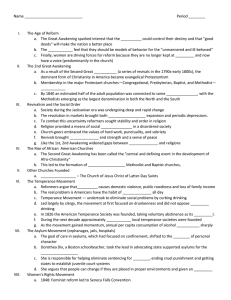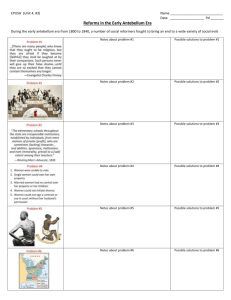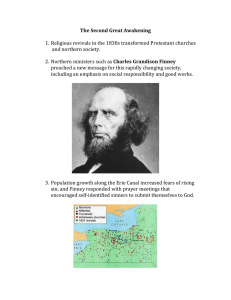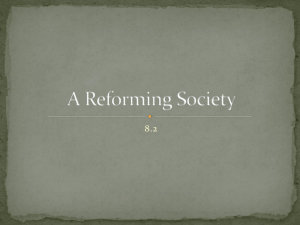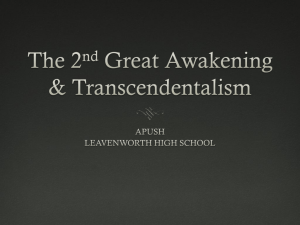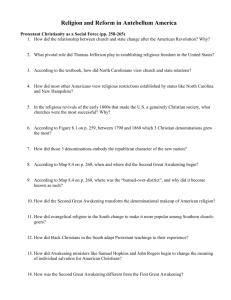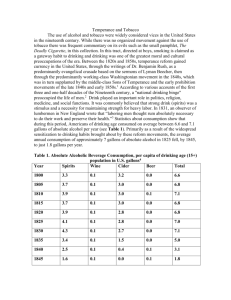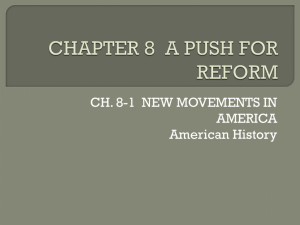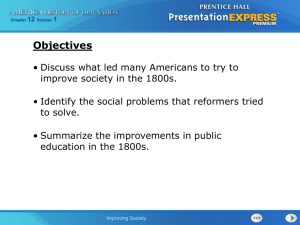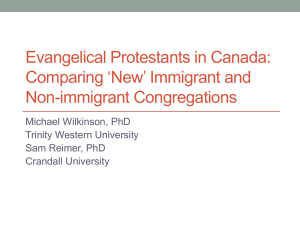The Pursuit of Perfection
advertisement
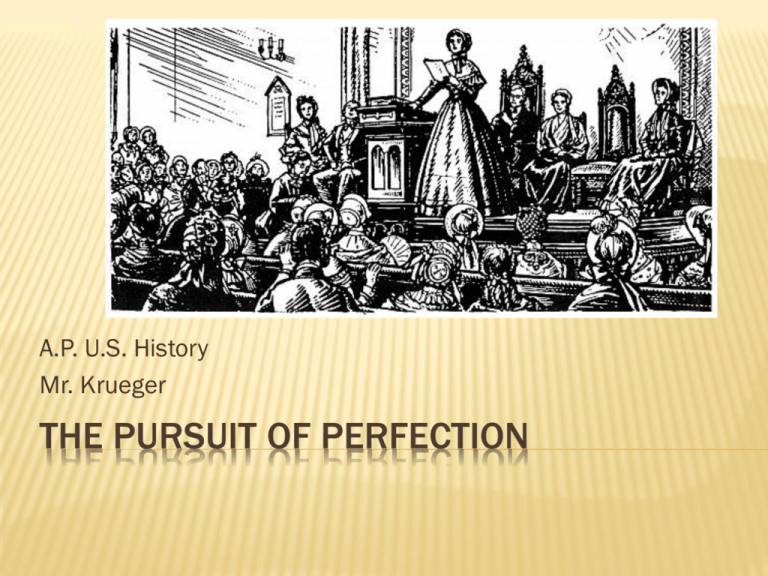
A.P. U.S. History Mr. Krueger THE PURSUIT OF PERFECTION RELIGIOUS REVIVALS 1830-1831 – Revivals in the North Charles G. Finney led the revival in Rochester, NY. Heavy Drinkers and irregular church goers now change their tune Followers of Finney attempt to get others to convert Evangelical Protestantism provided the middle class with a strong sense of identity and purpose Finney hoped that religious conversion and moral uplift would spread on its own Religious reform: Attacks on alcohol, slavery, war, and government Imposed new order and cultural unity Instilled more radical movements that threaten to undermine established institutions. REVIVALISTS AND JACKSONIANS Evangelical revivalists in a way were similar to Jacksonians: Difference: Both sought popular favor Both assumed individuals were free agents capable of self direction and self improvement Jacksonians felt common people provided no threat to the community Evangelical reformers felt that common people needed to be redeemed or uplifted. In the 19th century – American Protestantism was in constant ferment. Spreading the gospel and reforming morals Ending government funding Secular ideas as a base for Democratic Republicans MORE GREAT AWAKENINGS 1801 – a crowd of 50,000 gather at Cane Ridge, Kentucky – 2nd Great Awakening (South) Organized by: Methodists, Baptists, Presbyterians Potentially the only way to get baptized, married, or gain religious experience was at a camp meeting. Promoted a sense of community 2nd Great Awakening in the North Small town revivals Reform and redemption of the human race – social changes unlike the South. Developed to defend Calvinism – differences between age groups and the definition of God. Women’s movement and temperance movement. TEMPERANCE MOVEMENT – “DEMON’S RUM” 1820’s – whiskey was popular. Cheaper than beer and milk, and safer than drinking water. Alcohol consumption was triple that of today. Temperance reformers felt alcohol was a threat to public morality and it threatened families. Main target was abusive men. 1830’s – consumption declined by 50%. WOMEN AND THE AMERICAN FAMILY Evangelical Culture changed the institution of family Triumph of marriage for love – mutual affection a must. Wives were companions, not servants – egalitarian tone But the husband was still head of the household Evangelical movement encouraged feminine influences. Revivals Gave women a role in converting men Created Christ with feminine characters: Merciful Loving Nurturing Provided a model for the women’s new role DISCUSSION What were the social expectations of women in this time period? Cult of True Womanhood Two Spheres Unmarried Women Prostitutes Sororities Feminism Childhood EDUCATION AND ASYLUMS Horace Mann – most influential spokesman for school movement Established the State Board of Education Adequate tax base for education Taught the 3 R’s and protestant ethics Reformers thought that malcontents could be helped in a controlled environment Previously: Insane were allowed to wander Criminals were whipped and jailed Paupers were supported by charities Asylums, prisons, and poor houses created to be humanitarian, therapeutic, and attempted to reform Not successful, needed to be improved. DISCUSSION How did reforms turn radical? Temperance American Peace Society Slavery, Racism, Abolition FADS AND FASHION New diets – fruits, veggies, and whole wheat Women began to wear loose bloomers Phrenology became popular – study of the shape of the skull to determine aptitude and intelligence Séances and contacting the dead
